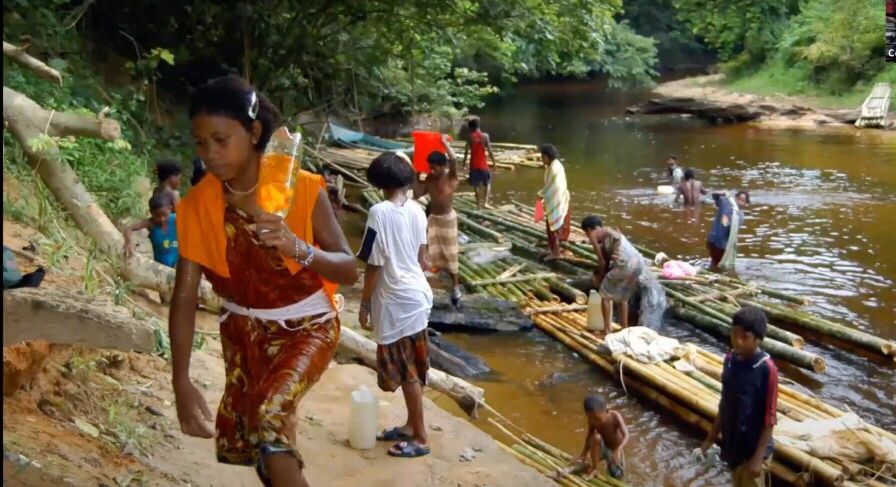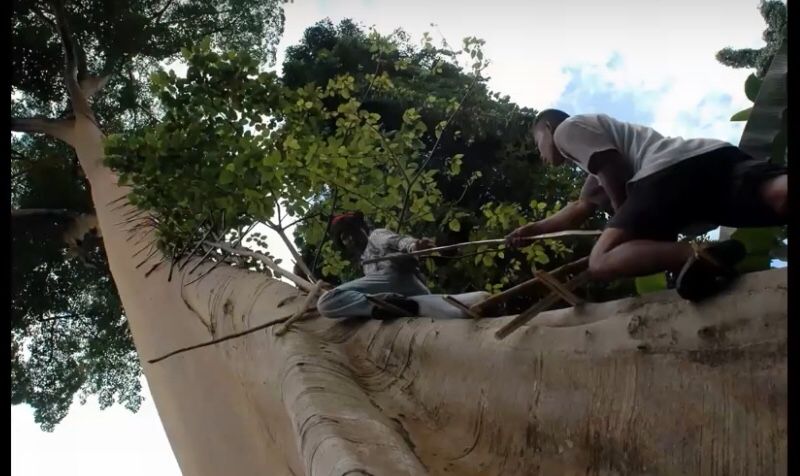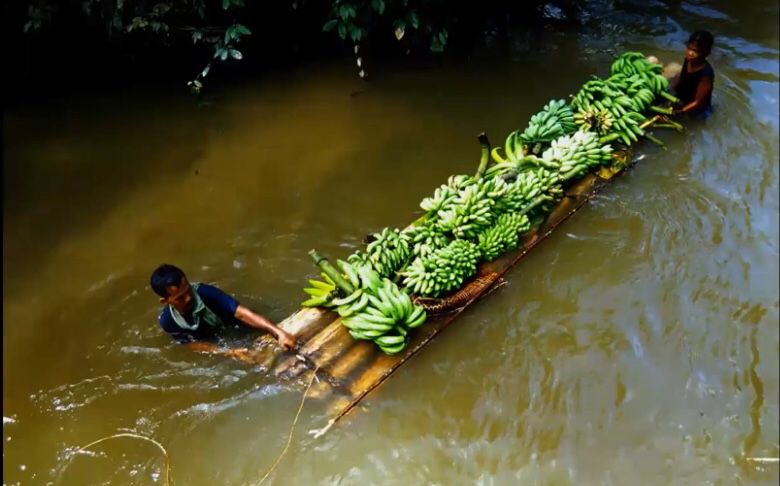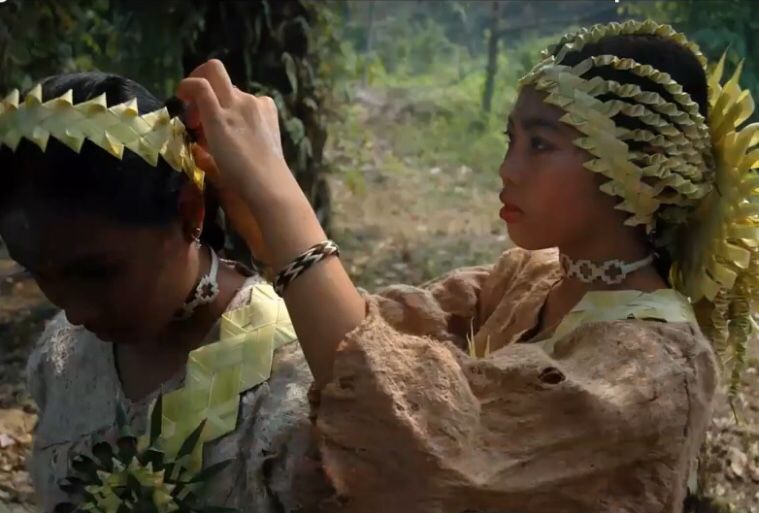|
An online talk given by Dr Colin Nicholas to MCG members on January 12, 2022. Dr Colin Nicholas has long been involved in the protection of the Orang Asli. In 1989, he founded the Centre for Orang Asli Concerns (COAC), a volunteer-run organization which he has been coordinating ever since. He has also acted as an expert witness in Orang Asli Land Court cases, several of which have set precedents. His PhD from the University of Malaya in 2000 focused on Orang Asli politics, development and identity. He has also authored numerous articles and published books on the Orang Asli and indigenous issues. Dr. Colin Nicholas began his passionate and insightful presentation with an introduction to the term Orang Asli followed by a brief history of this population. He then explained the critical concepts for understanding the Orang Asli, namely the concept of land and also some spiritual aspects of the Orang Asli culture. This very dense conference ended with a Q&A focusing mainly on the complex issue of education |
||
 |
||
|
Clarification on the terminology
The term Orang Asli means original people of peninsula Malaysia.They form collectively with the indigenous people of Sarawak (Dayak/Orang Ulu) and of Sabah (Anak Negeri) the Orang Asal. Altogether, the Orang Asal and the Malays constitute the Bumiputera. The precision is important because Dr Colin Nicholas clarified that his presentation only covered the Orang Asli and more precisely those who live in the forest or near the forest. |
||
 |
||
|
The Orang Asli today
The poorest minority in the Country
The descendants of the early inhabitants of the peninsula before the establishment of the Malay kingdoms represent only 210,000 people (0.6% of the national population). They are now the most marginalized and poorest minority in Malaysia, with a poverty rate of 89.6% in 2020. They do not benefit from the general economic development of the country and are far behind in terms of access to commodities, schooling and health services. According to the official classification, this minority is composed of three main ethnic groups: the Negrito (Semang), the Senoi and the Aborigines-Malays or Proto-Malays who in turn are subdivided into 19 subgroups.
A heterogenous group The Orang Asli are not a homogeneous group. The 19 subgroups differ a lot. In terms of size, their population ranges from 105 to 58,500 people. Moreover, they are spread all over the peninsula and the actual number of settlements certainly exceeds the official records of 853 villages, plus 126 Kampung identified mainly in Pahang, Kelantan and Perak. In terms of identity, each tribe has its own language and culture, and perceives itself as different from others. They also have a different lifestyle. Only 1% of the Orang Asli are nomadic or semi-nomadic. The majority 60% are rural farmers, the remaining 38% are forest dwellers, and the last 1% are urban settlers. |
||
 |
||
|
A little bit of history
Their contribution to the history of Malaysia is sadly not recognised. Yet in pre-sultanate times, the Orang Asli were the dominant peoples of the peninsula. Without them, sultanates could not have been established. Traces of their influence can be found in writings about the arrival of Parameswara on the peninsula and the creation of Melaka, of Perak, and in Johor where until today, according to custom, at the funeral of the Sultan one of the six people holding the sultan's coffin on his shoulder is an Orang Asli.
During the development of the sultanates they were exploited and even reduced to slavery (until the abolition of slavery by the British).
During the colonial period, to protect themselves, they retreated into the forest and marginalized themselves, only attracting the interest of anthropologists and missionaries. The first, considered them as specimens to be studied and took the measurement of their skulls for their research. The second were eager to convert them. Things changed between 1948 and 1960 during the emergency period. The construction of the New Villages and the displacement of the Chinese populations broke the link between the Chinese villagers and the Communists. The communists in turn take refuge in the forest where they are well received by the Orang Asli who supported them, as they did before during the fight against the Japanese invaders. In return, the communists supported the rights of the Orang Asli.
Legally, it was not until 1974 that the Indigenous Peoples Act, passed in 1954, was amended to include more social and economic aspects. |
||
 |
||
|
Some concepts and precepts to understand the lifestyle and spirituality of the Orang Asli. Without generalizing, it can be said that the Orang Asli living in the forest or near the forest share certain beliefs highlighted below.
The concept of "land": The customary land is the geographical space of the ecological niche specific to each Orang Asli community. Thse are not lands per se, but each community, has an area defined by a natural land mark such as a river, mountains..., but each community has an area delimited by a natural landmark such as a river, mountains… Each territory has its own spirits, good and bad, which belong to the plot. They must be treated with respect and according to customs. This is why the Orang Asli protect their land and also why relocation cannot be an option. Sustainability is important. The Orang Asli have a good knowledge and understanding of their environment. Hill rice cultivation is a good illustration of their know-how. For 500 years, the Semai have cultivated rice without deforestation. They even managed to cultivate different varieties of rice, up to 16, in the same paddy. Science of burning: The Orang Asli are unfairly blamed for the destruction of the forest., They never create a forest fire. They know how to control it to avoid its uncontrolled propagation.The selection of the field to cultivate is done through rituals and dreams, as well as a physical check of the place. A loose soil in which the foot sinks, does not resist erosion in case of rain and is therefore not suitable for a rice field. Once validated, the field is cleared of trees and brush. It will dry for 3 to 4 months before being exploited. In the end, only the exploited plot is cleared, the surroundings are not affected. Spirituality: Many rituals are present in all aspects of their lives. Regarding the cultivation of rice, they believe that God asked for the sacrifice of the first daughter of the first human. Because food comes from this sacrifice, it cannot be wasted. Moreover, in order to show respect to the spirits, the strands are cut one by one. Societal and environmental harmony is sought. Spirits govern life. Any bad action can lead to bad luck. Harmony is the basis. All living things are interdependent and interact with spirits. The notion of co-responsibility is also crucial. This means that whatever happens in any place, all humans are co-responsible for it. Not only is mutual aid necessary, but in addition no one can feel unconcerned by what is happening. Ruai: the soul. Anything that grows, moves or is warm has a soul that needs to be respected and treated well. There is a soul of the paddy and humans have to ask permission to grow, to harvest, etc Penaliq: There are 3 levels of food on earth: In the water: fish, shell fish… On land: animals, vegetable, fruits… In the sky: birds, monkey… Each has to be considered separately and one cannot mix different levels in the same meal. Gernaq: Food has to be shared with all and there should not be wasting or overeating. Terlaiq: The good treatment of animals is essential. You must show respect, ask permission to kill, and give thanks after killing. Sernnlang: keeping the commitment. Any agreement or appointment must be respected. There is no formal or signed agreement, the word is authentic. If it is impossible to respect an appointment agreement, the person must still go there at the agreed time and then turn back. |
||
.jpeg) |
||
|
The challenges to keep the orang Asli culture and traditions alive. The main challenge is not to break the belief system. It is the cornerstone of the Orang Asli tradition and culture. But threats are numerous: The loss of the customary land is certainly the biggest threat, as land is at the centre of the culture. The spirit being specific to a land, the relocation of people will lead to breaking the link with spirits and traditions. The problem being that these lands are very valuable and the government is eager to get their hands on the natural resources there. But to get the land, they need to remove people. Hence the current policy and denial of land rights for the Orang Asli even though this is recognized in Common Law. Government policy of integration denying their identity as Orang Asal and their autonomy. The Malays claim dominance and advance three main arguments before international bodies such as the UN:
• The Orang Asli and the Malays are the same, but the Malays choose modernity. • The Orang Asli have no formal civilization; • The Malays have a numerical superiority, so they represent the majority. Quotations from Tun Razak and Mahathir have been given to illustrate this point. Education: young children are separated from their parents and communities and placed in hostels to attend a school where they are taught a curriculum that excludes their culture and even alienates them from their own culture, language and beliefs. Religions: both Christianity and Islam require them to convent and discard their old beliefs which are considered superstition. Dispossession of their own culture: when they are told what to do and how to do it. This is the case with certain performances in schools or at public events where traditional dances are transformed into shows that no longer have any connection with the original. |
||
.jpeg) |
||
|
The way forward. There is no simple solution, but a few simple actions can help document the culture and a few avenues can be explored to give the Orang Asli the agency to manage their own culture. Documenting: to record knowledge and traditions in writing, video, photo or sound is crucial. It is known that after being educated the first generation generally rejects its own culture to adopt the new one. But the next generation feels the loss of their origins and wants to go back and find their roots. It is therefore important that the rising generation can find archives and documents to help them in their quest. Capacity building could help develop the autonomy and the capacity for action of the population even in the absence of a charismatic leader who would stimulate the population. The political representation of the Orang Asli remains limited; with only one MP in Cameron Highlands and only two members of the Senate. But even with less than 0.6% of the population, the Orang Asli still have political clout. In 1999, the Sakay vote tipped the balance in favour of Najib Razak. Explore the possibilities and opportunities of a mixed education with a double curriculum. Control aid, which is often well-intentioned but also often misdirected, to avoid creating dependency on external aid. Seek a solution to the growing mental health problems faced by this population weakened by the loss of its bearings. The presentation was then followed by a short Q&A session focusing on education, political representation and the Orang Asli villages as a tourist site. Dr. Colin is a great advocate of the Orang Asli. The quality of his presentation raised our level and awareness of the Orang Asli to a higher level. He managead to simply present a very complex issue, making us want to know more about this marginalized, almost invisible, population.
Review by Josiane Reganne Photos from Dr. Colin Nicholas' presentation |




